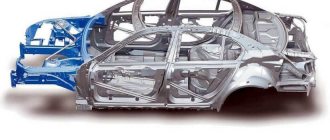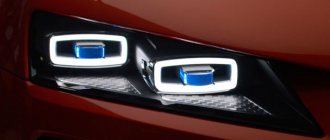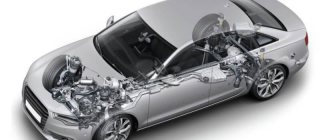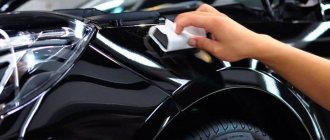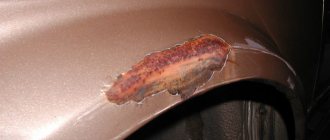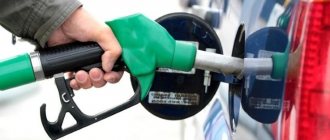When developing a new car model, each manufacturer strives to increase the dynamics of its products, but at the same time not to deprive the car of safety. Although the dynamic characteristics largely depend on the type of engine, the car body plays a significant role. The heavier it is, the more effort the internal combustion engine will exert in order to accelerate the vehicle. But making the car too light often has a negative impact on downforce.
By making their products lighter, manufacturers strive to improve the aerodynamic properties of the body (what aerodynamics is is discussed in another review ). The weight of the vehicle is reduced not only through the installation of units made of light alloy materials, but also thanks to lightweight body parts. Let's look at what materials are used to make car bodies, as well as the pros and cons of each of them.
Background of automobile bodies
The body of a modern car is given no less attention than its mechanisms. Here are the parameters it must meet:
- Lasting. In the event of a collision, it should not injure people in the cabin. Torsional rigidity should ensure that the car maintains its shape when driving over uneven terrain. The smaller this parameter is, the greater the likelihood that the car frame will deform and the vehicle will be unsuitable for further use. Particular attention is paid to the strength of the front part of the roof. The so-called "moose" test helps the automaker determine how safe the car will be in a collision with a tall animal, such as a deer or elk (the entire mass of the carcass is located on the windshield and the roof crossbar above it).
- Modern design. First of all, sophisticated motorists pay attention to the shape of the body, and not just to the technical part of the car.
- Safety. Everyone inside the car must be protected from external influences, including in the event of a side collision.
- Versatility. The material from which the car body is made must withstand different weather conditions. In addition to aesthetics, paint coating is used to protect materials that are susceptible to aggressive moisture.
- Durability. There are often cases when the creator skimps on body material, which is why the car becomes unusable after just a few years of use.
- Maintainability. To avoid having to throw away the car after a minor accident, the production of modern body types involves modular assembly. This means that the damaged part can be replaced with a similar new one.
- Affordable price. If the car body is made of expensive materials, a huge number of unclaimed models will accumulate on the sites of automakers. This often happens not because of poor quality, but because of the high cost of vehicles.
In order for the body model to meet all these parameters, manufacturers have to take into account the characteristics of the materials from which the frame and outer body panels are made.
To ensure that car production does not require a lot of resources, company engineers develop body models that allow them to combine their main function with additional ones. For example, the main units and interior parts are attached to the car structure.
Initially, the design of cars was based on a frame to which the remaining components of the car were attached. This type is still present in some car models. An example of this is full-fledged SUVs (most jeeps simply have a reinforced body structure, but no frame; this type of SUV is called a crossover ) and trucks. On the first cars, each panel attached to the frame structure could be made not only of metal, but also of wood.
The first model with a supporting structure without a frame was the Lancia Lambda, which rolled off the assembly line in 1921. The European model Citroen B10, which went on sale in 1924, received a solid steel body structure.
Lancia Lambda
Citroen B10
This development turned out to be so popular that most manufacturers of those times rarely deviated from the concept of an all-steel monocoque body. These cars were safe. Some companies refused steel for two reasons. Firstly, this material was not available in all countries, especially during the war years. Secondly, the steel body is very heavy, so some people made compromises in body materials in order to install an internal combustion engine with less power.
During the Second World War, steel was in short supply throughout the world, since this metal was entirely used for military needs. Out of a desire to stay afloat, some companies decided to produce the bodies of their models from alternative materials. So, in those years, cars with aluminum bodies first appeared. An example of such models is the Land Rover 1-Series (the body consisted of aluminum panels).
Another alternative is a wooden frame. An example of such cars is the Willys Jeep Stations Wagon modification Woodie.
Since the wooden body is not durable and needed serious care, this idea was soon abandoned, but as for aluminum structures, manufacturers seriously thought about introducing this technology into modern production. Although the main apparent reason was a steel shortage, this was not actually the motivating factor that led automakers to look for alternative options.
- Since the global fuel crisis, most car brands have had to reconsider their production technology. First of all, the audience requiring powerful and high-capacity engines has sharply decreased due to the high cost of fuel. Motorists began to look for less power-hungry cars. And in order for transport with a smaller engine to be sufficiently dynamic, a lightweight, but at the same time sufficiently durable material was required.
- Over time, environmental standards for vehicle emissions have become increasingly stringent throughout the world. For this reason, technology began to be introduced to reduce fuel consumption, improve the quality of combustion of the air-fuel mixture and increase the efficiency of the power unit. To do this, you need to reduce the weight of the entire car.
Over time, developments from composite materials appeared, which made it possible to further reduce the weight of vehicles. Let's consider what is special about each material that is used to make car bodies.
Interesting materials science: what a car can be made from
The main material for car production is steel. Indeed, steels have sufficient structural strength, low price, and can also be used in various technological processes: they are easily stamped or welded. But steels also have disadvantages. The main one is low corrosion resistance, which forces designers to use special protective coatings to protect the body. In addition, the steel part has a large mass. Therefore, aluminum alloys, plastics and composite materials are widely used in the design of cars.
This is due to the desire to reduce the vulnerability of car bodies to corrosion, as well as to reduce the total weight of the car, which has a beneficial effect on efficiency and controllability. Nevertheless, sheet steel is not losing its position, since the cost of aluminum, and even more so composite materials, is much higher. Large automobile plants can process over 1,000 tons of sheet steel per day, which are used to produce a wide range of automotive parts. But let's take a look at other materials that could replace steel in car manufacturing.
Tree
It’s right to start our review with a tree. This material was at the origins of the automotive industry and was widely used in cars before the widespread use of steel. Wooden planks or simply plywood were often used in the bodies of cars, trucks , buses and other utilitarian structures.
It’s worth mentioning separately about luxury cars - wealthy owners turned to body shops, where they created truly works of art. The body panels were made of varnished wood of valuable species, and the interior was lined with expensive morocco or silk.
Standing apart here is the unique Hispano-Suiza H6C, built in 1924 by racer Andre Dubonnet. Its engine with several carburetors with a displacement of almost 8 liters developed 200 hp, but for a real racing car a lightweight body was needed. Dubonnet did not have enough light alloys of magnesium or aluminum, which were in short supply in those years, and therefore turned to the aircraft manufacturing company Nieport with a request to build a lightweight body.
Steel body: advantages and disadvantages
Most body elements of a modern car are made of rolled steel. The thickness of the metal in some sections reaches 2.5 millimeters. Moreover, low-carbon sheet material is used predominantly in the load-bearing part. Thanks to this, the car is quite light and at the same time durable.
Today steel is not in short supply. This metal has high strength; elements of various shapes can be stamped from it, and parts can be easily fastened together using spot welding. When manufacturing a car, engineers pay attention to passive safety, and technologists pay attention to the ease of processing the material, so that the cost of transport is as low as possible.
And for metallurgy, the most difficult task is to please both engineers and technologists. Taking into account the desired properties, a special grade of steel was developed that has the ideal combination of drawability and sufficient strength of the finished product. This simplifies the production of body panels and increases the reliability of the car frame.
Here are some more advantages of a steel body:
- Repairing steel products is the easiest - just buy a new element, for example, a wing, and replace it;
- It is easy to recycle - steel is highly recyclable, so the manufacturer always has the opportunity to obtain cheap raw materials;
- The technology for manufacturing rolled steel is simpler than processing light-alloy analogues, so the raw materials are cheaper.
Despite these advantages, steel products have several significant disadvantages:
- Finished products are the heaviest;
- Rust quickly appears on unprotected parts. If the element is not protected with a paint coating, the damage will quickly render the body unusable;
- In order for sheet steel to have increased rigidity, the part must be stamped many times;
- The resource of steel products is the smallest compared to non-ferrous metals.
Today, the properties of steel are improved by adding certain chemical elements to the composition that increase its strength, oxidation resistance and ductility characteristics (TWIP grade steel can stretch up to 70%, and its maximum strength is 1300 MPa).
Sheet steel
Most bodies are made from sheet steel for a variety of reasons. The most important of these reasons are:
- high strength;
- deformability (possibility of stretching);
- weldability (as well as suitability for soldering);
- colorability;
- sufficient service life with proper anti-corrosion treatment;
- satisfactory price.
In general, the following sheet steels :
- thin-sheet, cold-rolled mild steel grade RRST 1405 according to DIN 1623 (quality standard), DIN 1541 (dimensional standard) with a tensile strength of 270-350 MPa, elongation of more than 36%, with a matte, clean surface, thickness 0.6-0.9 mm (supplied in 0.1 mm thickness intervals), used for viewable (interrogated) exterior panels (roof, hood, doors, sidewalls, etc.);
- the same grades of steel as indicated above, sometimes thin-sheet boiling steel grade UST 1203 or UST 1303, i.e. of worse quality, with a tensile strength of 270-410 MPa, elongation 28-32%, the same thickness as indicated above, used for non-visible (painted), external panels, as well as floor parts (internal frame, reinforcements, floor panels, cross members, etc.);
- hot-rolled steel strip according to DIN 1624 (quality standard), DIN 1606 (dimensional standard) grade ST 4 with a tensile strength of 280-380 MPa, elongation of more than 38%, thickness of 1.5-2.5 mm and more, used for parts located at the bottom of the body (reinforcements, supports, flanges, etc.), especially thick ones.
The design and manufacturing technology of parts must be based on the maximum width of the supplied sheet steel (currently 2000 mm). For parts operating in a corrosively aggressive environment, galvanized sheet steel should be used, taking into account that during the manufacture of parts such steel does not allow large deformations (bending, slight stretching). In special cases, aluminized sheet steel can be used. Both surfaces of steel sheets can be subjected to special treatment.
Aluminum body: advantages and disadvantages
Previously, aluminum was only used to make panels that were attached to a steel structure. Modern developments in aluminum production make it possible to use the material also to create frame elements.
Although this metal is less susceptible to moisture compared to steel, it has less strength and mechanical elasticity. For this reason, to reduce the weight of a car, this metal is used to create doors, trunks, and hoods. To use aluminum in the frame, the manufacturer has to increase the thickness of the products, which often works against ease of transport.
The density of aluminum alloys is much less than that of steel, so the sound insulation in a car with such a body is much worse. To ensure that a minimum of external noise enters the interior of such a car, the manufacturer uses special noise reduction technologies, which is why the car will cost more than a similar option with a steel body.
The production of an aluminum body in the early stages is similar to the process of creating steel structures. The raw materials are broken into sheets, then they are stamped into the desired design. The parts are assembled into a common structure. Argon welding is used only for this purpose. More expensive models use laser spot welding, special glue or rivets.
Arguments in favor of an aluminum body:
- Sheet material is easier to stamp, so the panel manufacturing process requires equipment that is not as powerful as for stamping steel;
- Compared to steel bodies, an identical shape made of aluminum will be lighter, while at the same time the strength remains at the same level;
- The parts are easy to process and can be recycled;
- The material is more durable compared to steel - it is not afraid of moisture;
- The cost of the manufacturing process is lower compared to the previous version.
Not all motorists agree to buy a car with an aluminum body. The reason is that even in the case of a minor accident, car repairs will be expensive. The raw materials themselves cost more than steel, and if a part needs to be replaced, the car owner will have to look for a specialist who has special equipment for high-quality connection of elements.
Precious metals in automobile catalysts
As mentioned above, modern catalysts include platinum, palladium and rhodium. In addition, iridium is widely used .
In many cases, the catalysts of cars produced in these mills are sorted separately as potentially containing this precious metal.
The platinum content in Japanese and Chinese cars is 15% less than in European ones; the catalysts of Russian cars have 40% less rhodium than in European ones. American contain half as much precious metals as European ones.
Plastic body: advantages and disadvantages
The second half of the twentieth century was marked by the emergence of plastic. The popularity of this material is explained by the fact that any structure can be made from it, which will be much lighter than even aluminum.
Plastic does not require paint coating. It is enough to add the necessary dyes to the raw materials, and the product acquires the desired shade. In addition, it does not fade and does not need to be repainted when scratches appear on it. Compared to metal, plastic is more durable; it does not react with water at all, so it does not rust.
The Khadi model has a plastic body
The cost of manufacturing plastic panels is much lower, since powerful presses are not needed for embossing. The heated raw material is fluid, thanks to which the shape of body parts can be absolutely any, which is difficult to achieve when using metal.
Despite these obvious advantages, plastic has a very big drawback - its strength is directly related to operating conditions. So, if the air temperature outside drops below zero, the parts become fragile. Even a small load can cause the material to burst or break into pieces. On the other hand, as the temperature increases, its elasticity increases. Some types of plastics warp when heated in the sun.
Here are some other reasons why plastic bodies are less practical:
- Damaged parts can be recycled, but this process requires special, expensive equipment. The same goes for plastic production.
- During the manufacture of plastic products, large amounts of harmful substances are released into the atmosphere;
- Load-bearing parts of the body cannot be made from plastic, since even a large piece of material is not as strong as thin metal;
- If a plastic panel is damaged, it can be easily and quickly replaced with a new one, but this is much more expensive than welding a metal patch to the metal.
Although these days there are various developments that eliminate most of the listed problems, it has still not been possible to bring the technology to ideal. For this reason, bumpers, decorative inserts, moldings are mainly made from plastic, and only in some car models - fenders.
Transmission and gearbox
In order for the engine to operate at its optimal speed in each mode, when power and torque are at or close to maximum, a gearbox is needed. The transmission also transmits torque to the vehicle's wheels through the axle shafts in the case of front-wheel drive vehicles or through the driveshaft in the case of rear-wheel drive vehicles. The last design scheme is classic.
Let's look at how a car's gearbox works. There are four gearbox options - a traditional manual gearbox, an automatic torque converter gearbox, a robotic and a CVT system.
The manual transmission is arranged as follows. Gears and shafts are installed in a steel or cast iron housing. There are only three of the latter - the primary, intermediate and secondary shaft. But that is not all. All gearbox models have an additional shaft and reverse gears. The box also consists of a crankcase, synchronizers, a shift mechanism and a gear selector.
The gearbox shafts rotate on bearings. Each has a set of gears with a different number of teeth. To ensure that the gearbox operates silently and the gear shifts smoothly, the gears are equipped with synchronizers. They are designed to equalize the angular speeds of gears during rotation. A shift mechanism is necessary to change speed. The driver selects the required gear through the selector lever.
Body made of composite materials: advantages and disadvantages
The term composite means a material that contains more than two components. During the process of creating the material, the composite acquires a homogeneous structure, due to which the final product will have the properties of two (or more) substances that make up the raw material.
Often, a composite will be obtained by gluing or sintering layers of different materials. Often, to increase the strength of a part, each individual layer is reinforced so that the material does not peel off during operation.
Monocoque body
The most common composite used in the automotive industry is fiberglass. The material is obtained by adding a polymer filler to fiberglass. External body elements are made from this material, for example, bumpers, radiator grilles, and sometimes head optics (more often they are made of glass, and lightweight versions are made of polypropylene). The installation of such parts allows the manufacturer to use steel in the design of the load-bearing parts of the body, but at the same time keep the model quite light.
In addition to the advantages listed above, polymer material occupies a worthy place in the automotive industry for the following reasons:
- The weight of the parts is minimal, but at the same time they have decent strength;
- The finished product is not afraid of the aggressive effects of moisture and sun;
- Thanks to elasticity at the raw material stage, the manufacturer can create completely different shapes of parts, including the most complex ones;
- Finished products look aesthetically pleasing;
- You can create huge body parts, and in some cases even the entire body, as is the case with kit cars (read more about such cars in a separate review ).
However, innovative technology cannot be a complete alternative to metal. Here are some reasons for this:
- The cost of polymer fillers is very high;
- The mold for making the part must be perfect. Otherwise, the element will turn out ugly;
- During the manufacturing process, it is extremely important to keep the workplace clean;
- Creating durable panels takes a long time, since the composite takes a long time to dry, and some body parts are multi-layered. Often solid bodies are made from this material. The popular term “monocoque” is used to designate them. The technology for creating monocoque body types is as follows. The carbon fiber layer is glued with a polymer. Another layer of material is laid on top of it, only so that the fibers are located in a different direction, most often at a right angle. After the product is ready, it is placed in a special oven and kept for a certain time at high temperature so that the material bakes and takes on a monolithic shape;
- When a part made of composite material breaks, it is extremely difficult to repair (an example of how car bumpers are repaired is described here );
- Composite parts are not recycled, but only destroyed.
Due to the high cost and complexity of manufacturing, conventional road cars have a minimal number of parts made of fiberglass or other composite analogues. Most often, such elements are installed on a supercar. An example of such a car is the Ferrari Enzo.
2002 Ferrari Enzo
True, some exclusive models of the civilian series receive dimensional parts made of composite. An example of this is the BMW M3. This car has a roof made of carbon fiber. The material has the required strength, but at the same time allows you to move the center of gravity closer to the ground, which increases downforce when entering corners.
Another original solution in the use of lightweight materials in the car body is demonstrated by the manufacturer of the famous Corvette supercar. For almost half a century, the company has been using a spatial metal frame in its model, onto which panels made of composites are attached.
Plastics
Recently, the possibility of using plastics in bodybuilding
, although solid plastic bodies or even plastic load-bearing units are a thing of the distant future. However, there are many proposals on this topic. Since 1953, it has been producing a fairly large number of Chevrolet Corvettes with a body stamped from fiberglass-reinforced polyester material. The body had a supporting frame made of steel pipes. Of particular interest is the floor of a multilayer structure, experimentally manufactured for an open plastic body reinforced with fiberglass. In the future, it will be possible to produce lightweight, open thermoplastic bodies for special vehicles in small quantities.
The advantages of plastics are low weight, high strength and rigidity, good noise-absorbing properties due to high internal damping, easy assembly of components achieved due to the ability to manufacture large parts, and high corrosion resistance.
These undoubted advantages of plastics are countered by significant disadvantages, in particular, the high cost of materials and their manufacture, the long duration of the technological cycle, difficult installation and repair, and low energy absorption.
Due to these disadvantages, plastics are not suitable for mass-produced bodies. Nevertheless, the high manufacturability of plastics, the possibility of producing parts by casting or using vacuum drawing, make it possible to widely use plastics for both small and large stamped parts. When choosing plastics, one is mainly guided by the mechanical and thermal properties of the materials. The following most important types of plastics are used in bodybuilding:
- Thermosetting plastics (so-called thermosets) according to DIN 7708, DIN 16911, DIN 16912 standards are used for heavily loaded parts (levers, handles); if the plastic is reinforced with fiberglass, then it is also used for large parts of special (sports) cars called fiberglass, for example, for hoods, trunk lids, decorative grilles, fenders, side panels, etc.
- Various thermoplastics (the following are just some of the possible materials that are offered under various brand names). For example, acrylonitrile butadiene styrene is used for vacuum drawn parts such as radiator trims, instrument panels; acrylic glass - for transparent parts, windows, diffusers, lanterns; polyamide - for wear parts such as moving elements of locks, air duct housings, etc.; polyvinyl chloride - for elastic and soft parts, artificial leather, film coatings, hoses, seals, insulation; polyurethane - for high-strength parts; foam polyurethane - for linings, insulating materials; polyurethane with a hard surface area - for handles, armrests, trims, instrument panels, deformable front trim, etc.
- Elastomers (ethylene propylene rubber) with a monolithic shell are used, for example, for weather and aging resistant seals (doors, windows).
This list should be considered indicative only. The polymer industry is able to offer or develop materials suitable for specific applications. Plastics have the following advantages:
- low costs for manufacturing parts and low weight;
- satisfactory stability of given dimensions;
- simple processing and connection technology (gluing);
- the possibility of obtaining a surface of various colors and embossing (shiny and matte metallization is possible);
- High resistance to weather conditions and corrosion.
Due to the wide range of possibilities for the use of plastics, it is not surprising that the proportion of plastic parts (by weight) in the body is constantly increasing and currently accounts for approximately 7.8% of the total weight of European cars. Plastics offer great opportunities for reducing body weight.
Answers on questions
What is an internal combustion engine?
An internal combustion engine is an engine in which fuel is burned directly in the working chamber (inside) of the engine. The internal combustion engine converts thermal energy from fuel combustion into mechanical work.
What is a gearbox?
A gearbox is a mechanism for changing the torque transmitted from the engine crankshaft to the drive wheels, for moving the car in reverse and for long-term disconnection of the engine from the transmission while the car is parked and when it is moving by inertia (coasting).
What is a car suspension?
Suspension is a set of parts, components and mechanisms that play the role of a connecting link between the car body and the road.
What is a body?
The body is an element of the supporting part that provides accommodation for passengers and cargo, and very often acts as a frame for securing the main units and components of the car.
Source
Car device
The topic of car design is necessarily included in the curriculum of driving schools. During theoretical classes, everything is shown and explained to students using pictures, and during practical classes, the hood of the car is opened, and the instructor clearly shows the parts and mechanisms.
If you are not going to become a car mechanic, then you don’t need to know in detail the structure of the car, however, knowing the main points, you will quickly understand the principles of the car’s operation and control. In this article we will talk about how a car works.
Any person knows that a car is a body on wheels. However, what makes it move?
So, the car consists of:
Let's look at each component in more detail.
Car engine
The engine is the heart of the car, the source of mechanical energy that makes the car move. The most common is the internal combustion engine (ICE), which consists of a cylinder and a piston. Thermal energy is generated inside the cylinder, and when fuel is burned, it is converted into mechanical energy that drives the car. This process occurs at a frequency of several hundred times per minute, which causes the engine crankshaft to rotate continuously. Our video will show you more details about how the engine works.
Car body
The car body can have a frame or frameless structure, but modern cars use a frameless structure, in which units and components are attached to the body. This body is called a load-bearing body. Depending on the body type, cars are divided into classes.
Car chassis structure
The chassis of a car consists of many mechanisms that transmit torque from the engine to the wheels, move the car and control it: transmission, steering mechanism and chassis.
Car transmission
The car's transmission transmits torque from the engine to the wheels, allowing it to change in magnitude and direction. On two-axle cars, the transmission consists of a gearbox, clutch, cardan drive, final drive, differential and axle shaft.
Car clutch
The clutch serves to transmit engine torque to the gearbox and smoothly connect or disconnect the engine with the transmission mechanisms. From the clutch pedal comes a cable that activates the clutch mechanism. The clutch serves to protect engine and transmission parts from overload and damage during sudden gear shifting or braking.
Transmission
The gearbox is a mechanism that converts torque from the engine crankshaft to the drive wheels. Thanks to the gearbox, the car can move forward and backward, and the engine can be disconnected from the drive wheels.
Transmissions are mechanical, automatic, robotic and continuously variable.
The manual transmission has high efficiency and less weight. A car with a manual transmission is characterized by dynamic acceleration and economical fuel consumption.
The automatic transmission is easy to use, but it takes longer to change gears and uses more fuel.
The robotic gearbox is a symbiosis of automatic and manual gearboxes and has an electronic clutch control. This type of transmission is less clear than an automatic transmission.
In continuously variable transmissions there are no gears themselves, that is, steps, and the gear ratio changes smoothly. This gearbox is not widely used because the torque transmission belt cannot withstand the high power of modern engines.
Car chassis
The chassis of the car is the supporting body, rear and front axles, suspension, wheels and tires.
Suspensions come in various types: adaptive, multi-link, double-wishbone, for SUVs, pickups, trucks, semi-independent rear, dependent rear, Me Pherson and De Dion type suspensions.
Car control mechanism
The driving mechanism of a car is the steering wheel and brakes (disc and drum). The steering wheel allows you to change the direction the car is moving, and the brakes regulate its speed, stopping the car and holding it in place.
Car electrical equipment
The electrical equipment of the car allows you to start the engine, warm up and illuminate the interior of the car, illuminate the way in the dark, ensures the operation of the anti-theft system and has other useful functions, for example, it ensures the operation of car audio systems, which allows you to listen to music.
Knowing the structure of a car, a driving school student only needs to learn how to drive it. The video accompanying the article will introduce you in more detail to the structure of the car.
Author: Victoria Goldina. Update date: 10/18/2016 Reproduction is prohibited. Copyright is protected by law.
Source

